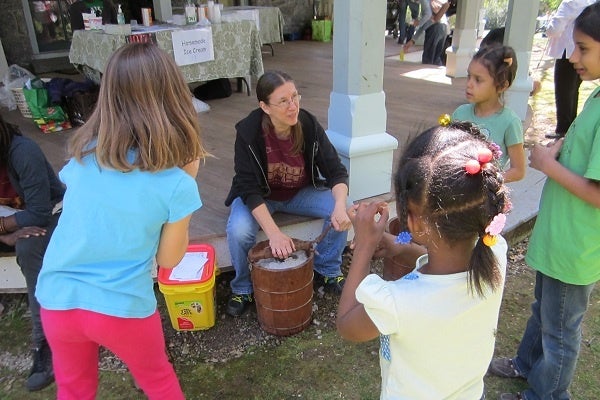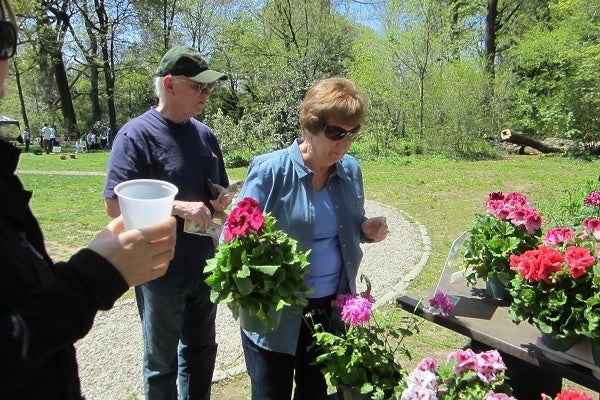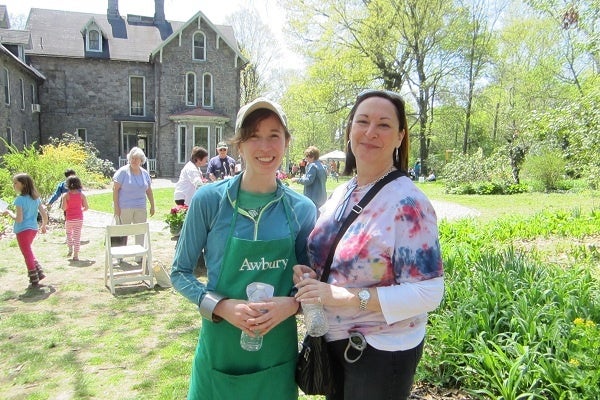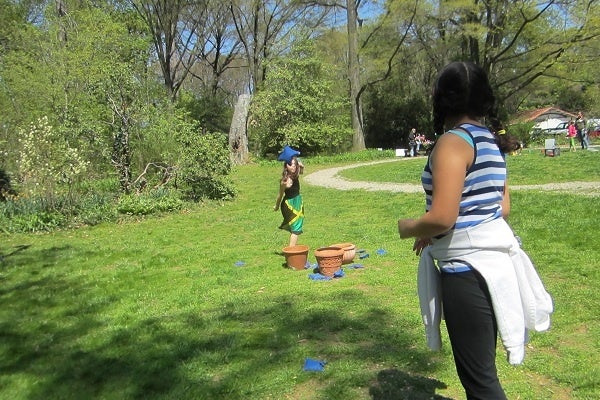West Oak Lane science festival turns into CSI: PCAT
As part of the 10-day Philadelphia Science Festival, the interactive “Be the Detective!” experience made its way to the Philadelphia Center for Arts & Technology (PCAT) in West Oak Lane on Saturday.
The mission was simple: Teach an estimated 50 youngsters about how real-life crime-scene investigators use forensic evidence to catch criminals.
Antoinette Thwaites, a forensic chemist and West Oak Lane native who founded the Association of Women in Forensic Science, teamed up with PSF to organize the event because she wanted to bring the science festival to the neighborhood.
The idea behind hosting a forensic science “mini-carnival” was giving children a better understanding of a field which works behind the scenes in assisting law enforcement, she said.
“I hope kids will see how important forensic science is to solving crime,” Thwaites said.
The anatomy of a science-fair crime scene
Children and their parents launched their investigation by checking out a mock crime scene which was cordoned off by police tape.
The case was that of determining who trashed a dressing room and stole the “Golden Microphone” award at the “Philly Phactor Song Contest.”
They studied fingerprints taken at the scene and compared them to enlarged copies of the fingerprints of four “suspects” (who were teenage actors from the Garden of Eden Productions).
At the field lab, they learned how to preserve and analyze their own fingerprints using magnetic dust.
They also made Play-Doh impressions of marks found at the scene in order to discover which tool had created them.
Through chromatography, they learned to identify which pen was used to write a note left at the crime scene.
Since a sneaker was also found at the scene, footprint analysis helped determine whose shoe it was, but not if that person actually wore it. Kids learned that wear pattern, caused by the unique way a person walks, is an important factor in effective analysis.
The investigation continues
It turned out that the suspect broke a flower pot, thus picking up some soil on the bottom of the shoe.
Soil analysis, using a Munsell color chart, was used to compare and describe what was found at the scene. The soil’s pH balance, composition and consistency were also tested.
At blood-spatter and serology analysis stations, students learned how bodily fluids left at a crime scene can give an indication of what happened. Examples of varying velocity spatters, drips, swipes, wipes and arterial spurts showed just how varied blood spatter can be.
Peering through a dark box, they could see the glowing effects of Luminol sprayed on swabs dipped in blood.
Experts there to help
Also on hand to answer questions about forensic evidence and crime-scene investigations were Terry Lewis from the Philadelphia Police’s Crime Scene Unit and Nicole Qualtieri, a pathologist’s assistant.
Qualtieri’s array of autopsy equipment and detailed descriptions of what each tool is used for left many squeamish.
Forensic scientist Kiara Nurideen brought her son Elias to the event. She said the event’s varied activities are a good way to give kids a basic idea of what goes on in her field.
“It’s pretty cool to expose Elias to science through this,” she said.
Getting to the bottom of it
In a makeshift interrogation room, all four suspects sat together answering questions from investigators. They offered their own, often dramatic, accounts of the events leading to the “crime,” slinging wild accusations at one another while their young audience tried earnestly to figure out what really happened.
Such distraction from the hard evidence proved to be confusing for some, who wound up ignoring the science as they focused on the dramatics.
After analyzing the evidence and hearing from the suspects, the young participants decided who they thought committed the crime. (“Allegra” did it.)
For her part, middle schooler Hannah Feldman said she has an interest in pursuing a career in forensics.
“I’m having so much fun!” exclaimed Feldman, an avid Sherlock Holmes fan and self-described science nut.
WHYY is your source for fact-based, in-depth journalism and information. As a nonprofit organization, we rely on financial support from readers like you. Please give today.














